Keywords: Employment Relations, Government, Employer, Public, Employment.
Governments occupy an important place in the making of employment relations due to the roles and duties assigned to them. The state has been transformed into a critically important actor along with the increasingly felt impact of globalization. Governments assuming employer status and increasing volumes of public employment have been arguments of the process. Therefore it renders governments to a key role in the making of public personnel policies and public employment. Elaborating the roles and duties assumed by governments, the framework for government will be drawn along with the dimensions of government as public employer and a road map for Turkey to be followed for Turkish public employment in the future.
More...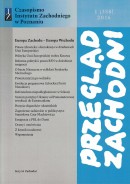
Translation: Zbigniew Szułczyński. The article describes the course of Willy Brandt’s visit to Poland in December 1985 and the circumstances that accounted for his not meeting Lech Wałęsa. W. Brandt did not strive very hard to talk to the Nobel Prize winner as most of the leadership of the SPD was convinced that all opposition movements in the East Block were doomed to failure. Moreover, SPD leadership was critical of the activity of ‘‘Solidarność’’. The goal of W. Brandt’s meeting with the East European leaders was to reactivate the policy of détente. The agenda of the visit included meetings with the leadership of the Polish United Workers’ Party (PZPR), and talks with Church authorities and representatives of the Club of Catholic Intelligentsia (KIK). It was only after his return to Germany that W. Brand exchanged letters with L. Wałęsa.
More...Keywords: Nezval; Vítězslav
This article considers the fiction of Vítězslav Nezval (1900–1958), which, in comparison with his verse, sometimes seemed to represent a marginal area of his work. The lyrical quality of some of his fiction was also emphasized. Though these texts do not constitute an absolute dissolution of the story into lyric verse, they do reveal a number of features of the traditional epic model, which Nezval, however, uses in new contexts, with new functions. The key point is the frame-like nature of the fictional world, which oscillates between the “possible” and “impossible.” Subsequently there is a considerable increase in the role of the switching mechanism from level to level of the text structure, and in the role of the narrator, who highlights the two fundamental levels. A stream of associations then moves to the foreground, often expressed in distinctively stylized poetic language. On the other hand, apart from the well-known and often-noted analogies with the work of Proust, one finds in Nezval’s fiction a number of intertextual references to the tradition of the novel from Flaubert to Meyerink; above all it is the strong, evident inspiration of Trivialliteratur. Nezval, however, employing the schematic approaches of Trivialliteratur, plays a game, often verging on parody and the absurd, and principally, maintaining tension between verisimilitude and fantasy. This dualism, on the boundary between reality and fiction, to which the reader is led and where the action takes place and the characters move, seems to be a fundamental feature of Nezval’s epic model.
More...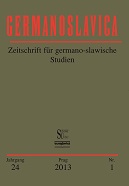
The paper concentrates on Czech hymnography in the 17th and 18th centuries in Central European context and traces specific contact zones between Czech works and the foreign-language, especially German environment. While in the 16th century Czech works exercised an influence beyond the borders of the Czech lands, this ceased to be the case in the Post-White Mountain period. The author discovers that the majority of Czech lyrics from the period between 1640 and 1750 are translations, adaptations and paraphrases of German texts which were selected from a wide variety of sources and authors. Thus, poetry from different periods and various spiritual streams of German literary life was introduced into the Czech environment. These ranged from the early Reformation period, the Catholic Reformation, the Lutheran Baroque, its latter variant in the form of Pietism, to the early seeds of the Enlightenment (poets such as Angelus SILESIUS, Friedrich VON SPEE, Paul GERHARDT, Johann HEERMANN, Johann FRANCK, Johann Athanasius FREYLINGHAUSEN, Nicolas Ludwig ZINZENDORF, Anna NITSCHMANN, etc.). Owing to the German stimuli, the spectrum of genres in Czech hymnography of the 17th and 18th centuries is comparatively rich and diversified.
More...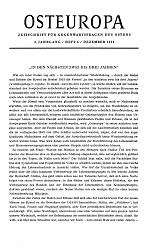
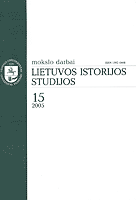
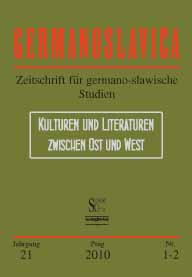
The article deals with the attitude of Paul CELAN, an Austrian poet, to Czech lands. Even though CELAN never visited Bohemia or Moravia, he was closely related to the region through the lives of his parents: his mother spent several years there in exile and his grandmother (agnatic) was buried in Kyjov (Moravia). Celan reflects the fact for example in his poems Es ist alles anders [Everything is Otherwise] or Wolfsbohne [Blue Pea]. The way CELAN is related to KAFKA, and through KAFKA to Prague, is complex – the fact is demonstrated for example in the poem titled In Prag [In Prague]. Prague is a frequent topic in CELAN’s correspondence with Franz WURM, a Prague-resided poet writing in German, from the end of 1960s and the occupation of Czech lands by the armies of the Warsaw Pact on August 21, 1968 appears as a topic in three CELAN’s poems. The study is concluded with the reception of CELAN’s work in Czech lands through numerous translations published in journals and mainly through the anthology titled Sněžný part, arranged by a Czech translator, Ludvík KUNDERA, and published in 1986.
More...The 2014 Nobel Prize in Economics
More...Both Blok and Wagner are artists of the “crisis”, and their aesthetics coincide in many points (Gesamtkunstwerk, Künstlermensch). In their arts neomythologism is realized in a myth concentrated in a symbol on the one hand, or in a music-drama swollen into a tetralogy on the other. The Wagnerian “Leitmotif’ plays an important composing role in the analyzed Blok-poems. Through a considerable part of the Blok-cycle the thematically also very musical “Harps and Violins” marches the duality of attraction of passion and suppression of passion, and in the end it is dissolved in the indelible memory of first love. Here, too, like in the drama “The Song of the Fate” the main role is played by the violins that symbolize passion. Considering Wagner-reminiscencies the essay emphasizes on the drama mentioned above and the poem “Retribution”. Both go back to the figure of Siegfried, who is a symbolically important hero to Blok. Retribution is the idea that connects Wagner and Ibsen — but Ibsen is also remarkable for the harp-motive (“The Master Builder”). The Wagnerian dragon from Nietzsche’s Zarathustra appears in Blok’s poem, too, and the idea common to all four authors: the motives of the child and of the new beginning is also apparent. The metaphysical music concept of Schopenhauer and Nietzsche is the key to the theoretical writings of the two analyzed authors. According to Wagner divine music that expresses the essence of phenomena combined with drama is able to come to life. It is new in Blok’s music concept that the life-changing, irresistible force of nature is also called “music” by him.
More...
Keywords: Miloš Crnjanski; Island of the abstract; Georg Trakl;
Since some of the crucial Expressionist features have been diagnosed in the poetry of Miloš Crnjanski, but his actual relation with the main Expressionist poets has not been researched, the author of this paper seeks to determine the structural and topical affinities of Miloš Crnjanski’s and Georg Trakl’s poetries. The poetics of Expressionism establishes the abstract as the dominant category of the poetic universe that rearranges the reality. The permanent tendency of the lyrical subject in Trakl’s poems, and of the poet himself, is to find the correlations between disparate subject matters and to found a „higher reality” on such grounds. The ambition of this paper’s author is to reveal this principle, or at least its rudimentary form, manifesting in various aspects of Miloš Crnjanski’s work.
More...
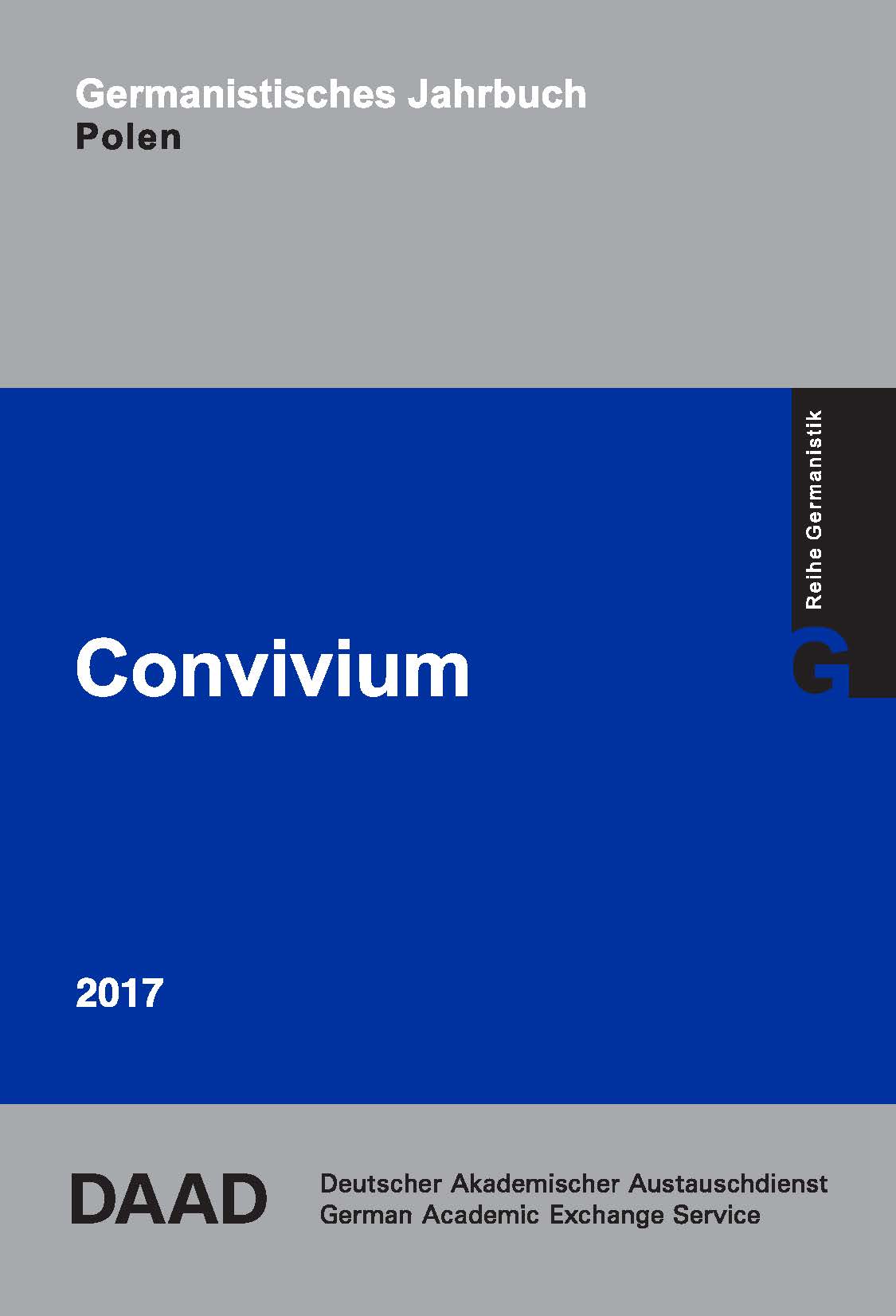
The aim of this article is to discuss Wolfgang Herrndorf’s (1965-2013) weblog Arbeit und Struktur, published in book form in 2013, as an autothanatographic text, i.e. autobiographical writing that focuses on the individual’s coming to terms with terminal illness and death. Arbeit und Struktur is an account of the last three years of Herrndorf’s life (from when he was diagnosed with a brain tumor until his death). His blog is analyzed as a literary document of ars moriendi nova, which questions religious traditions, abandons the hope for life after death, pleads for the right for euthanasia in the face of an unbearable suffering and irreversible illness, and substitutes the need to reconfirm the link with God, which is characteristic of traditional forms of ars moriendi, with the need to reconfirm the values held throughout one’s life.
More...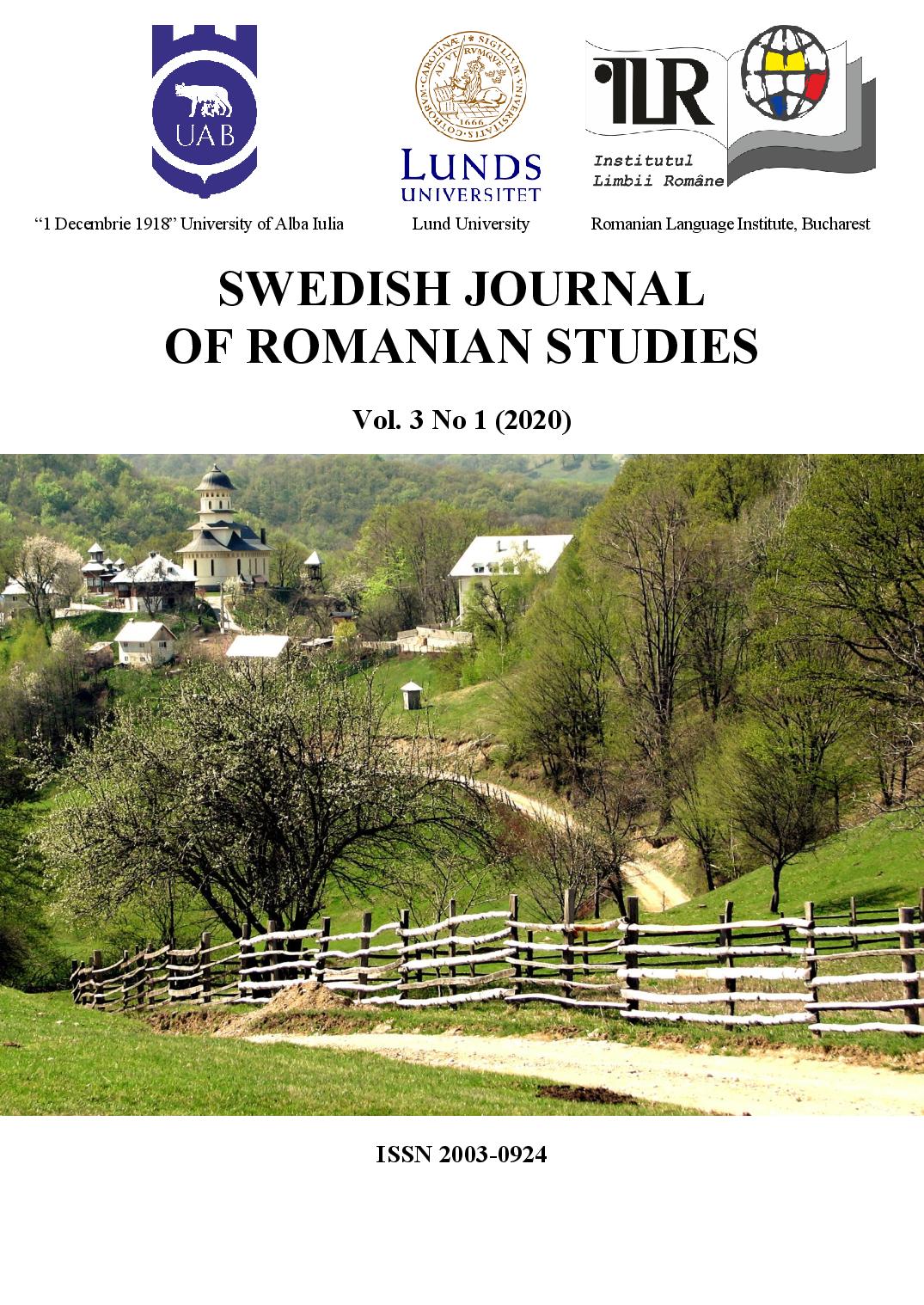
Keywords: German; language; meaning; stereotype; translation;
The present article evolved from a series of short Romanian translations based on the German version of Adam Fletcher’s book entitled “How to be German in 50 new steps/ Wie man Deutscher wird. In 50 neuen Schritten” (2016). Spanning more than three months, the outcomes of the translating process were rendered concrete with the collective contribution of five Erasmus students at Leipzig University, Germany, all of whom (their teacher included) are native speakers of the Romanian language. Frequently employing a combination of free and formal translation-styles, the team of translators-to-be strove to retain all the meanings, be they propositional or expressive, presupposed or evoked, or those generated by idioms, fixed expressions and non-equivalence in the original text. They provided alternative translations, mostly differing on the levels of lexis, grammar and register, but eventually negotiated the best one, which naturally became the final translated text, as much as possible freed from any traces of “translationese” and suitable for any authentic contemporary sample of Romanian language.
More...
Keywords: machine translations;journalistic text;
This study focuses on the identification and classification of machine translation errors in translating journalistic texts from German into the highly inflectional Slovak language. The aim of the research is to evaluate the quality of machine translation via product analysis, namely using error analysis. We used the framework for the identification and classification of machine translation errors devised by the Vaňko and MQM-DQF error typology. We analyse two issues of error defined in the MQM-DQF error typology: accuracy, how precisely the target text represents the content of the source text, and fluency, linguistic (grammatical) correctness of the target text. We discovered that the most significant errors are in the area of lexical semantics, followed by complex sentence syntax and grammar.
More...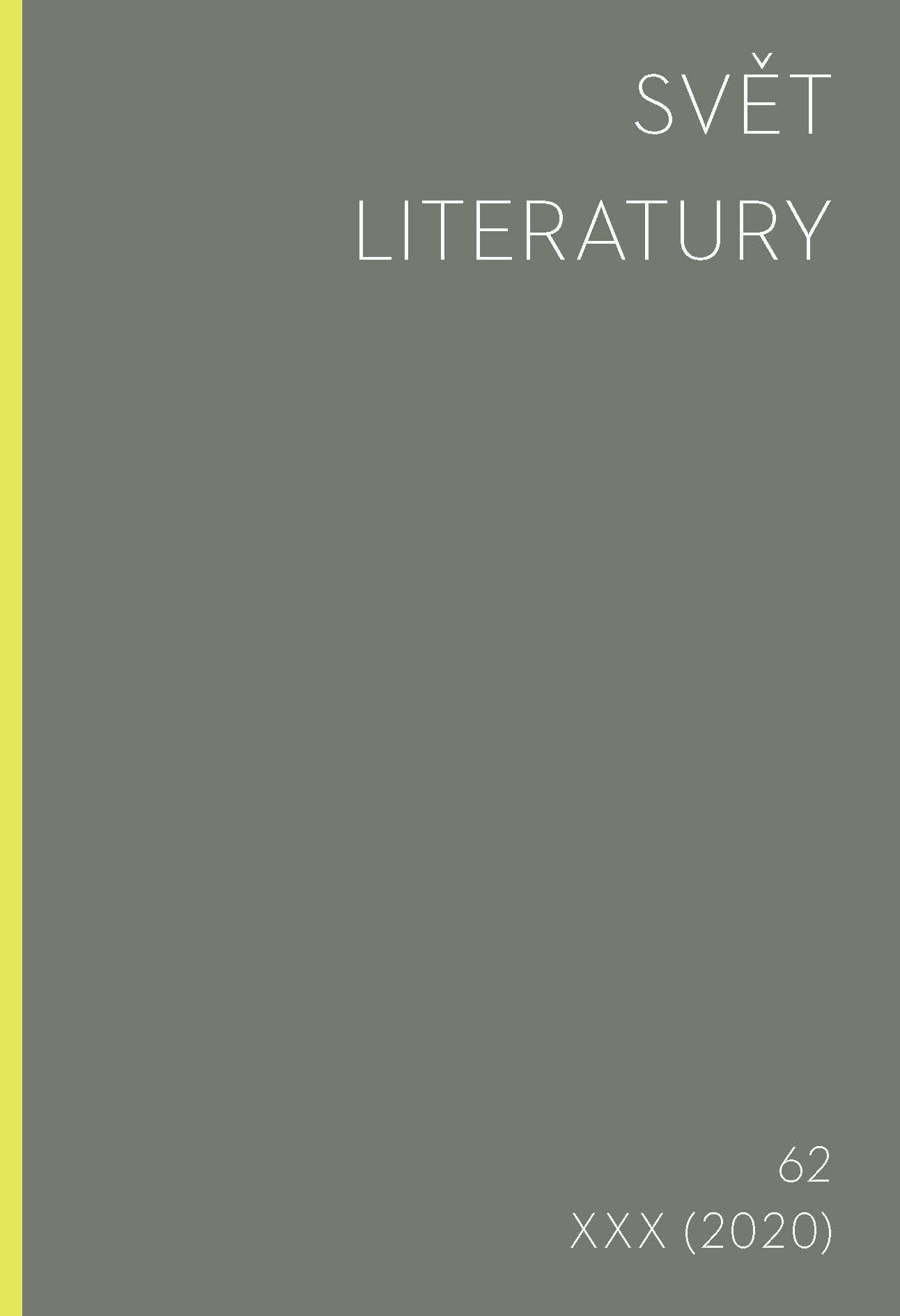
Keywords: Otokar Březina;Emil Saudek;poetry;hermeneutice;worldview;symbolism;neomysticism;vitalism
The paper examines the relationship between the poetic works of Otokar Březina and its translations and interpretations by Emil Saudek. The aim is to put Saudek’s interpretations of Březina into the context of mysticism, neomytologism and neovitalism of the early 20th century modernism, the philosophical background of which Saudek knew very well. It can be said that in Saudek’s translations, criticism, and readings of Březina an ideal symbiosis of a translator and/as interpreter.
More...
Keywords: Leo Steinberg; Pablo Picasso; Cubism; Phenomenology; Modernism;
In the present study, I will consider Leo Steinberg’s interpretation of Picasso’s work in its theoretical framework, and I will focus on a particular topic: Steinberg’s account of “Picasso’s Sleepwatchers.” I will suggest that the Steinbergian argument on Picasso’s depictorial modalities of sleep and the state of being awake advances the hypothesis of a new way of representing affectivity in images, by subsuming emotions into a “peinture conceptuelle.” This operation corresponds to a shift from modernism to further characterizing the postmodernist image as a “flatbed picture plane.” For such a passage, I will also provide an overall view of Cubism’s main phenomenological lectures.
More...
Keywords: historia kobiet; epoka wiktoriańska; ideały kobiecości; Królowa Wiktoria; ideologia oddzielnych sfer
The paper aims at (1) presenting several difficulties that may be encountered in the process of translation of a popular-science text about history, and (2) giving reasons why this kind of a text is worth to pay attention to. I assume that the translation may serve an educational purpose as an example text used in teaching future translators and developing their translation skills. The translated version of the text into Polish may be a source of information in the field of social history, and more precisely in the field of research in the history of women in Victorian era. The author of the article on ideals of womanhood in the Victorian Britain is Lynn Abrams – a historian at the University of Glasgow. The article was published in 2001 on the BBC website that deals with popularizing the history of Great Britain. I intend to disseminate this text in popular-science magazine that deals with social history or gender history as a source of knowledge about social, cultural and political living conditions of women in Victorian era.
More...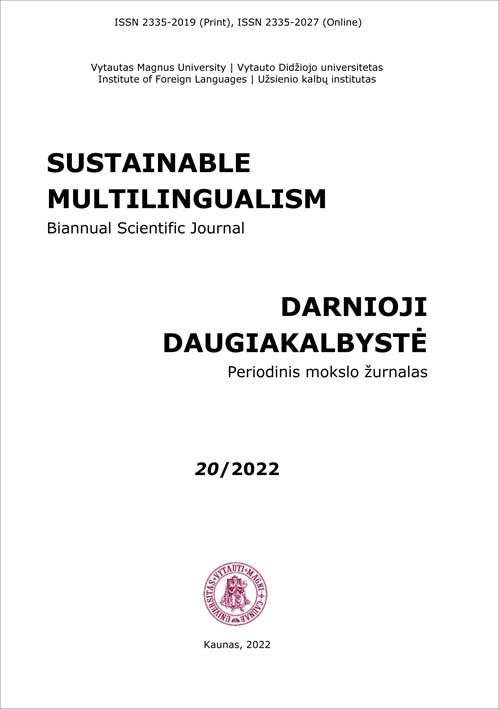
Keywords: Audiovisual translation; Cultural realia and terms; Subtitling translation strategines;
The publication deals with the problem cultural realia and terms in translation. The empirical part is a case study that investigates challenges in subtitling when rendering the subtitles of the Lithuanian memory film “Emilia. Breaking Free” (2017) from Lithuanian into German and English. Subtitling, the oldest form of Audiovisual Translation, is both a process and a result when a source text is translated into the target text in a synchronized manner with the original verbal message. Serious translation problems can arise because the subtitles are supposed to convey the verbal or nonverbal message in a compressed form. Cultural realia and terms are cultural elements that structure human life from the time of birth to the extent that they shape our behavior and worldview. Moreover, since the areas referred to by real property descriptions can be very diverse, they are subject to different classifications depending on the character and the object. Accordingly, monocultural, infracultural and transcultural references can be subdivided more precisely into socio-political, geographical, ethnographic and nonverbal realia. When transferring realia, three large groups of translation strategies can be identified: the unchanged adoption of the realia in the target language, the omission and the replacement by an equivalent. Since most translation techniques in the corpus studied appear as strategies of change, the central question is to what extent linguistic and cultural-specific items can be reflected in the subtitling movies about traumatic historical experiences. / Straipsnyje pateikiama atvejo analizė, kurioje, remiantis lietuvių istorine drama „Emilija iš Laisvės Alėjos“ (2017), nagrinėjamos kultūrinių realijų pavadinimų vertimo galimybės iš lietuvių į vokiečių ir anglų kalbas. Subtitravimas, seniausias audiovizualinio vertimo būdas, apima procesą ir rezultatą, kai originalo kalbos tekstas sinchroniškai kartu su originalo žodiniu turiniu tampa vertimo kalbos rašytiniu tekstu. Su tuo neišvengiamai susijusios vertimo problemos, nes subtitruose glausta forma būtina perteikti žodinę ir nežodinę informaciją. Realijų ir jų pavadinimų atveju susiduriama su kultūrinėmis reikšmėmis, kurios nuo gimimo veikia žmogaus gyvenimą, elgesį ir pasaulėjautą. Kadangi realijų pavadinimai apima daug sričių, jas galima klasifikuoti pagal pobūdį ir objektą. Taip išskiriamos monokultūrės, intrakultūrinės ir transkultūrinės realijos, kurios savo ruožtu gali būti skirstomos į visuomenines-politines, geografines, etnografines ir neverbalines realijas. Perteikiant realijų pavadinimus subtitruose galima išskirti tris pagrindines vertimo strategijų grupes: vertimas nekeičiant realijos pavadinimo, nevertimas ir realijos pavadinimo pakeitimas atitikmeniu. Kadangi dauguma realijų vertimo būdų tiriamajame tekstyne yra kaitos strategijos, kyla esminis klausimas, kaip kalbiniai ir kultūriniai ypatumai gali būti perteikti subtitruojant filmus apie traumuojančią istorinę patirtį.
More...